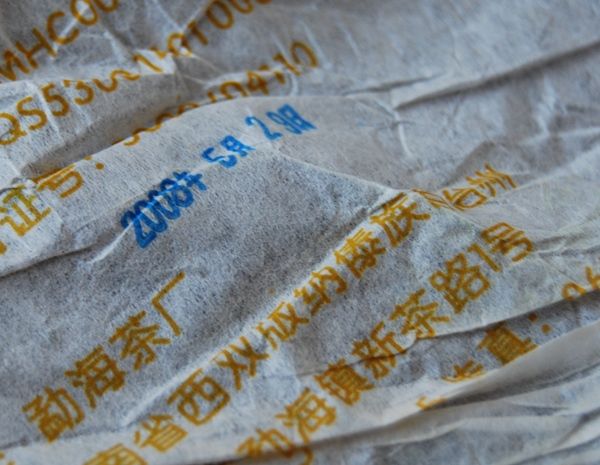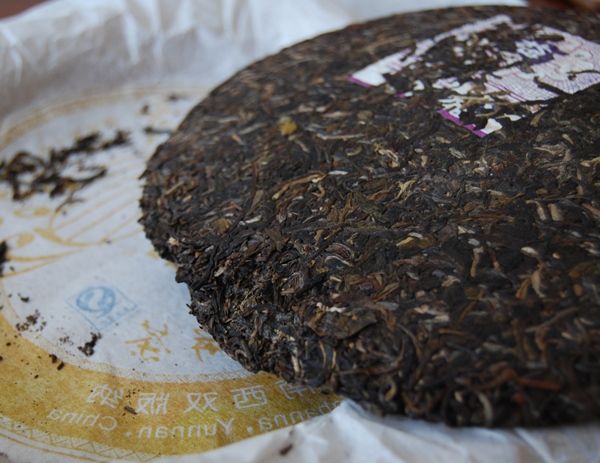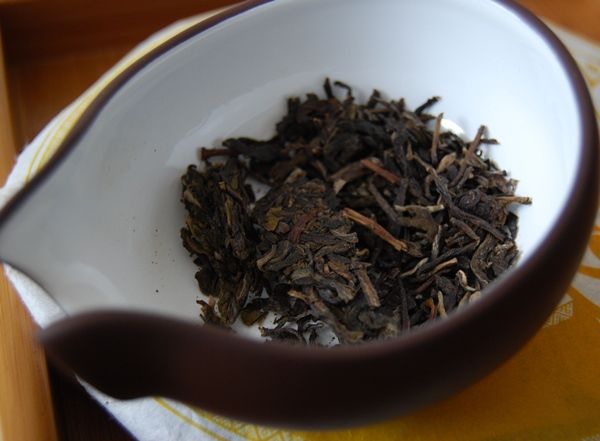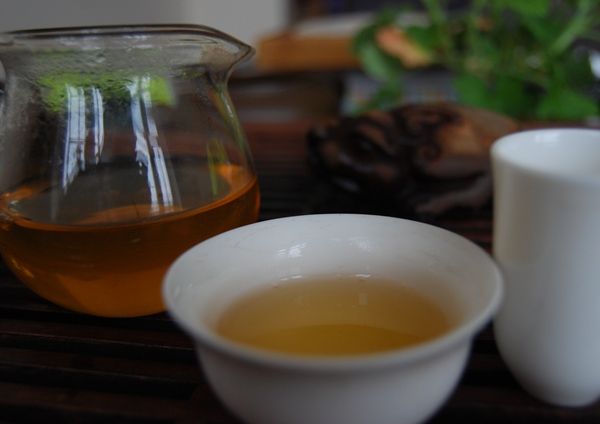I bought plenty of tea, around four years ago, that I don't think I'd buy again. I was a humble doctoral student*, and was therefore a man of limited means, and so tended to keep to more mainstream cakes, with their more down-to-earth prices.
This taught me a great deal about what not to buy. The result is that I have plenty of cakes on my shelf that I wouldn't buy again. Thankfully, the "peacock" [kongque - kong ch'ooer] range from Menghai Tea Co. is decent.
This taught me a great deal about what not to buy. The result is that I have plenty of cakes on my shelf that I wouldn't buy again. Thankfully, the "peacock" [kongque - kong ch'ooer] range from Menghai Tea Co. is decent.
*I'm still equally humble, except I'm no longer a doctoral student.
I clearly took this photograph some time ago
Back in 2008, this range was available in five colours; I have previously written about the green (Menghai region) and the blue (Mengsong region), both of which were pretty good, and having been settling into their age quite well in the years since.
Will this yellow-labelled Badashan cake keep up the standard?
Will this yellow-labelled Badashan cake keep up the standard?
The full name of these badboys is "wucai [wu-tsai] kongque bingcha", "five-coloured peacock" bingcha. I recall that one of the remaining colours is red, and my tea records indicate that the other regions covered by this series are Bulang and Nannuo.
Depressingly, my spreadsheet also tells me that I paid $10 each for these cakes. How prices have risen, even in the past four years! I defy you to find any reliable cakes for $10 these days, let alone Menghai (the produce of which seems, inexplicably, to have been priced through the roof).
Depressingly, my spreadsheet also tells me that I paid $10 each for these cakes. How prices have risen, even in the past four years! I defy you to find any reliable cakes for $10 these days, let alone Menghai (the produce of which seems, inexplicably, to have been priced through the roof).
Funnily enough, I seem to have four or five cakes of this yellow "Bada" version, which suggests that I rather liked it, along with the Menghai and Mengsong, which perhaps explains why articles exist for those two on the ol' Half-Dipper.
You may recall the compression of Menghai Tea Co.'s mainstream productions: the leaves are quite small, and pushed together using hydraulics (unsurprisingly), which leaves me chipping away at a granite-like cake for some time. I am reminded of "Dwarven bread" from the Discworld novels of my childhood.
You know the drill with Menghai: safe, solid, and by-the-numbers. We are not likely to be massively impressed with complexity or character, but we will be, at least, interested in a solid collection of regional flavours.
This Badashan cake fits the bill: its body is cooling and fresh, and it has the straightforward, unabashed, unadulterated kuwei [good throaty bitterness] that gives me that patented Menghai kick. The grassy, springtime character of Bada is present, beneath all that Menghai house style.
This Badashan cake fits the bill: its body is cooling and fresh, and it has the straightforward, unabashed, unadulterated kuwei [good throaty bitterness] that gives me that patented Menghai kick. The grassy, springtime character of Bada is present, beneath all that Menghai house style.
This isn't a grand tea, but we wouldn't expect that for $10. I am surprised that, for such a small amount, so much can be delivered - this is the particular genius of the original Menghai Tea Co. They know what they're doing, and they do it well. They are rightfully famous for their mastery of unexalted blends, and this is recognisably Menghai.
Strong, clean, punchy, and aging nicely - what more can one hope from $10?
Strong, clean, punchy, and aging nicely - what more can one hope from $10?
Addendum
April, 2015
The first brew is so strong that I dilute the soup in the gongdaobei, and them remove half of the leaves from the pot. I was not expecting such power. After dilution, it is clean and sweet. The fragrance of Badashan is apparent. It is refreshing, and also highly cooling. The quality of this humble cake (£10!) is obvious. Menghai makes basic tea very well indeed - they have had a long time to practise.
It has aged well, without thinning. This aging process is slower than would be achieved in hotter climes, but it is sweet, darkened, and pleasant.







What about the peacocks of Bulang and Nannuo? :-)
ReplyDeleteThis was really insightful. Am still a complete novice to the world of Puerh tea, so I look forward to learning more! Thanks!
ReplyDeleteDear Hektor,
ReplyDeleteA good question! I shall have to see if there are some on my shelf; I think there probably will be. :)
Dear Teaist,
Most kind - tea is, as with everything, a very personal affair, and I wouldn't like to think that I have much of interest to "teach" - we are all just drinkers around the same table.
Toodlepip,
Hobbes